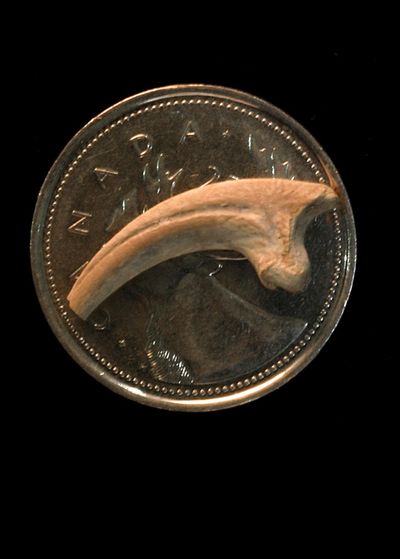Mini-raptor bones discovered

WASHINGTON – Imagine a vicious velociraptor like those in “Jurassic Park,” but only as big as a modern chicken.
That’s what Canadian researchers say they have found: the smallest meat-eating dinosaur yet discovered in North America.
This pint-size cousin of the velociraptor, weighing in at 4 to 5 pounds, “probably hunted and ate whatever it could for its size: insects, mammals, amphibians and maybe even baby dinosaurs,” according to Nicholas Longrich of the University of Calgary.
The creature lived 75 million years ago in the swamps and forests of southern Alberta, Longrich and colleague Philip J. Currie report in today’s edition of Proceedings of the National Academy of Sciences.
There has been plenty of evidence for large and medium-size dinosaurs in North America, but not small ones, Longrich said in a telephone interview. Now researchers see there was a dinosaur filling that niche also.
The bones of the small raptor were discovered among fossils that had been collected a quarter-century ago and remained in a museum drawer, Longrich explained.
Similar small dinosaurs have been uncovered in China in the last few years, and studying those helped the researchers identify this North American version.
Like the velociraptor, the tiny raptor had claws. At first the small claws were thought to come from juveniles, Longrich said. “But when we studied the pelvis, we found the hip bones were fused, which would only have happened once the animal was fully grown.”
Previously the smallest carnivorous dinosaurs found in North America have been about the size of a wolf.
The creature has been named Hesperonychus elizabethae, after the late Canadian paleontologist Elizabeth “Betsy” Nicholls, who recovered the specimen. Hesperonychus means “western claw,” a reference to the enlarged sickle-shaped claw on its second toe.